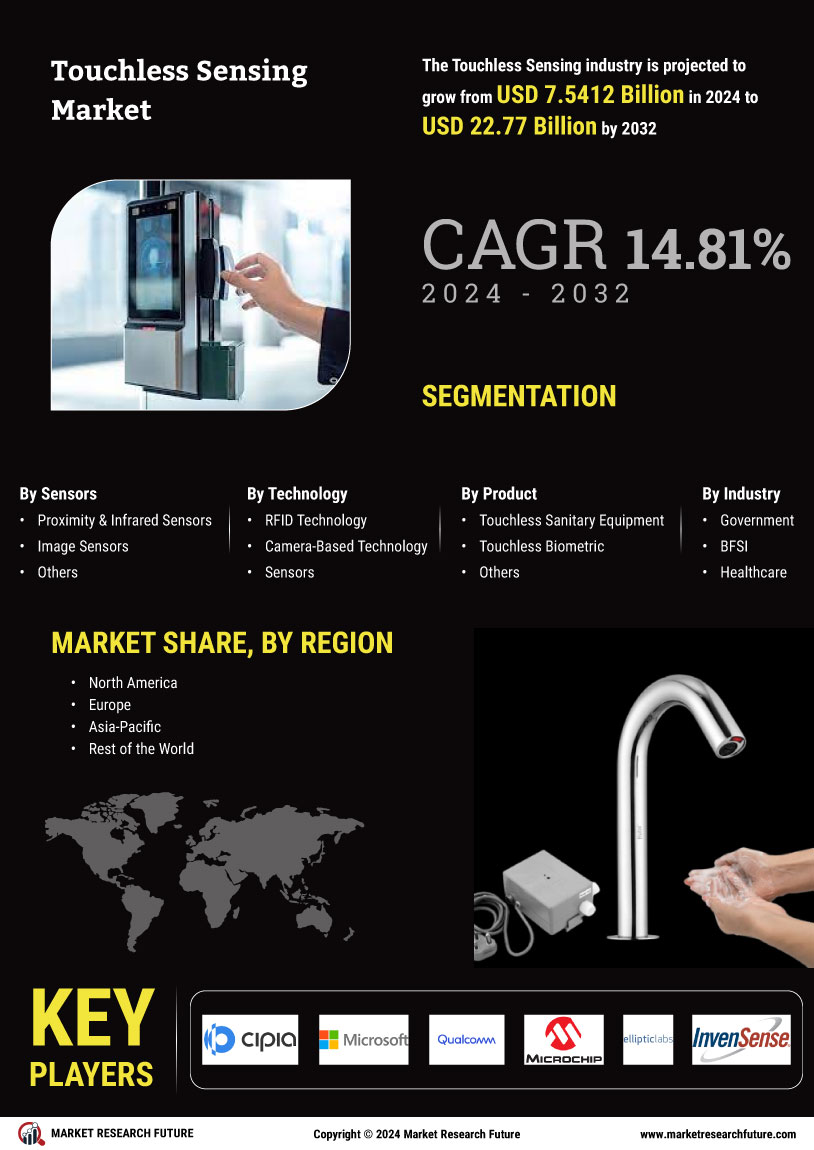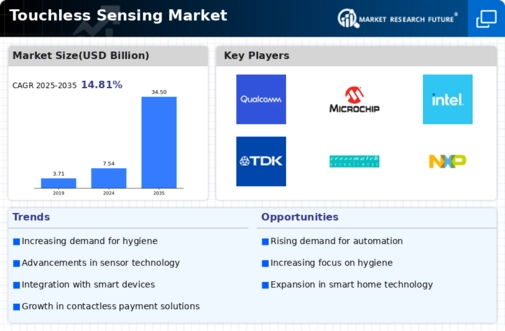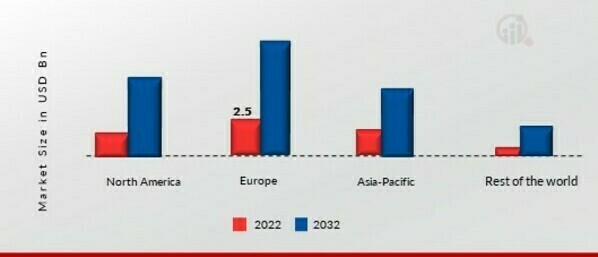Market Growth Projections
The Global Touchless Sensing Market Industry is projected to experience substantial growth over the coming years. With a market value of 7.54 USD Billion in 2024, the industry is expected to expand significantly, reaching 34.5 USD Billion by 2035. This growth trajectory indicates a robust compound annual growth rate (CAGR) of 14.81% from 2025 to 2035. Factors contributing to this growth include technological advancements, increased adoption in various sectors, and the rising demand for contactless solutions. The market's evolution reflects broader trends in consumer behavior and technological innovation.
Increased Adoption in Healthcare Sector
The healthcare sector significantly influences the Global Touchless Sensing Market Industry, as touchless technologies enhance patient safety and operational efficiency. Hospitals and clinics increasingly implement touchless solutions for patient monitoring, medication dispensing, and access control. For instance, touchless hand sanitizers and automated doors reduce the risk of cross-contamination in medical facilities. This trend is expected to drive market growth, with the industry projected to reach 34.5 USD Billion by 2035. The ongoing emphasis on improving healthcare delivery and patient experiences suggests that touchless technologies will become integral to healthcare operations.
Rising Demand for Contactless Solutions
The Global Touchless Sensing Market Industry experiences a notable surge in demand for contactless solutions across various sectors. This trend is driven by the increasing need for hygiene and convenience in consumer interactions. For instance, touchless payment systems have gained traction, with a significant percentage of consumers preferring contactless transactions. The market is projected to reach 7.54 USD Billion in 2024, indicating a robust growth trajectory. As businesses adapt to consumer preferences, the integration of touchless technology in retail, healthcare, and public services is likely to expand, further propelling market growth.
Consumer Electronics and Smart Home Integration
The integration of touchless sensing technologies in consumer electronics and smart home devices significantly impacts the Global Touchless Sensing Market Industry. As consumers increasingly seek convenience and automation, touchless interfaces in smart appliances, lighting, and security systems are becoming more prevalent. For example, voice-activated assistants and gesture-controlled devices enhance user interactions while minimizing physical contact. This growing trend is expected to drive market growth, as manufacturers prioritize touchless features in product design. The continuous evolution of consumer preferences suggests that the demand for touchless solutions in the electronics sector will remain strong.
Growing Focus on Smart Cities and Infrastructure
The Global Touchless Sensing Market Industry is poised for growth due to the increasing focus on smart cities and infrastructure development. Governments worldwide are investing in smart technologies to improve urban living conditions, enhance public safety, and streamline services. Touchless sensing solutions are integral to smart city initiatives, facilitating efficient traffic management, public transportation, and environmental monitoring. As urbanization continues to rise, the demand for touchless systems in smart infrastructure is likely to escalate, contributing to the overall market expansion. This trend aligns with global sustainability goals and urban planning strategies.
Technological Advancements in Sensing Technologies
Technological advancements play a pivotal role in shaping the Global Touchless Sensing Market Industry. Innovations in sensor technologies, such as infrared, ultrasonic, and capacitive sensors, enhance the accuracy and efficiency of touchless systems. For example, the development of advanced gesture recognition systems allows for seamless user interactions in smart devices and automotive applications. These advancements not only improve user experience but also contribute to the market's projected growth, with an anticipated CAGR of 14.81% from 2025 to 2035. As technology continues to evolve, the potential for new applications in various industries appears promising.








